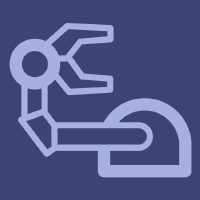Topic Menu
► Topic MenuTopic Editors


Artificial Intelligence in Navigation
Topic Information
Dear Colleagues,
Navigation is the science and technology of accurately determining the position and velocity of an airborne, land, or marine vehicle relative to a known reference, wherein the planning and execution of the maneuvers necessary to move between desired locations are analyzed. Artificial intelligence (AI) is a wide-ranging branch of computer science concerning the design of machines and software capable of performing tasks associated with intelligent beings, which encompasses machine learning, expert systems, knowledge engineering, and language processing. Due to the accelerating development and widespread prevalence of AI, navigation can effectively be supported by newly established AI technologies. This Topic is open to the entire spectrum of basic and applied scientific research, novel practical applications, and innovations. It also promotes the dialogue between governmental and private actors or institutions. Contributions to navigation theory, systems design, interoperability, or social impact analyses are similarly welcome.
Topics include, but are not limited to, the following:
- Marine, land, and airborne navigation
- Positioning/localization, route planning, and guidance
- Vehicle control
- VR/AR technologies, computer vision, and image processing/analysis/understanding
- Voice/speech recognition, language processing, and machine translation
- Methodologies, frameworks, and models in artificial intelligence
- Machine learning, deep learning, neural networks, fuzzy systems, evolutionary computation, and agent-based systems
- Knowledge representation and reasoning
- Information systems, maps, databases, and open data sources
- Robotic systems and autonomous vehicles
- Commercial, military, intelligence, education, and research applications
- Security and privacy issues and ethical questions
- Best practices and use cases.
Prof. Dr. Arpad Barsi
Prof. Dr. Eliseo Clementini
Topic Editors
Keywords
- navigation
- artificial intelligence
- route planning
- autonomous vehicles
- positioning/localization
Participating Journals
| Journal Name | Impact Factor | CiteScore | Launched Year | First Decision (median) | APC |
|---|---|---|---|---|---|

AI
|
- | - | 2020 | 20.8 Days | CHF 1600 |

Applied Sciences
|
2.7 | 4.5 | 2011 | 16.9 Days | CHF 2400 |

Electronics
|
2.9 | 4.7 | 2012 | 15.6 Days | CHF 2400 |

ISPRS International Journal of Geo-Information
|
3.4 | 6.2 | 2012 | 35.5 Days | CHF 1700 |

Remote Sensing
|
5.0 | 7.9 | 2009 | 23 Days | CHF 2700 |

Robotics
|
3.7 | 5.9 | 2012 | 17.3 Days | CHF 1800 |

Sensors
|
3.9 | 6.8 | 2001 | 17 Days | CHF 2600 |

MDPI Topics is cooperating with Preprints.org and has built a direct connection between MDPI journals and Preprints.org. Authors are encouraged to enjoy the benefits by posting a preprint at Preprints.org prior to publication:
- Immediately share your ideas ahead of publication and establish your research priority;
- Protect your idea from being stolen with this time-stamped preprint article;
- Enhance the exposure and impact of your research;
- Receive feedback from your peers in advance;
- Have it indexed in Web of Science (Preprint Citation Index), Google Scholar, Crossref, SHARE, PrePubMed, Scilit and Europe PMC.

